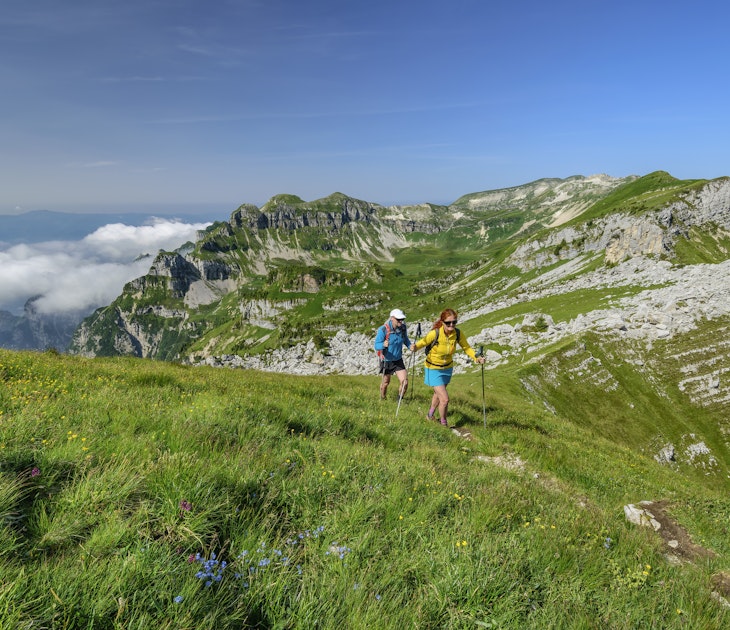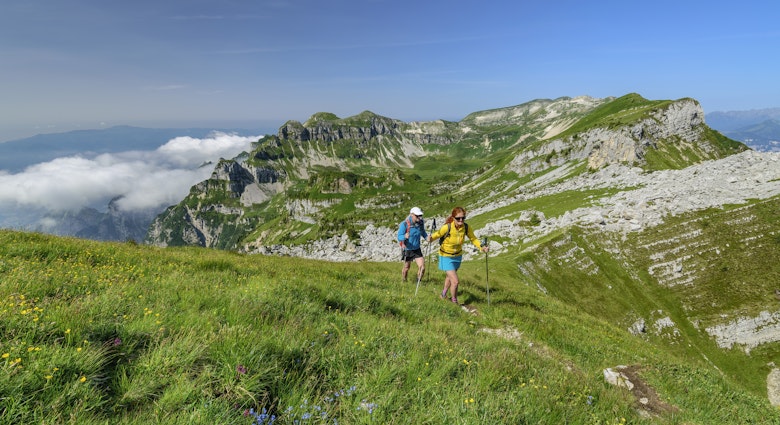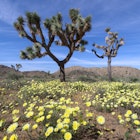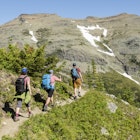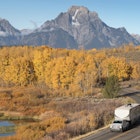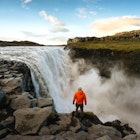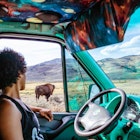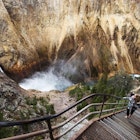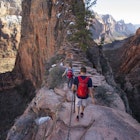Wander around Yellowstone National Park’s geothermal features, and you might notice the fire-engine-red warning signs ubiquitous as the bison.
“Dangerous Ground,” reads one, translated in five languages, with explicit directions to stay on designated paths while admiring the park’s bubbling beauties. Below the text, there’s a picture of a hiker who’s veered from the trail. They jump in alarm as a steaming vent billows beneath their feet.
It’s near impossible to miss the signs, which park rangers have put up since at least 1888. But each year, daring visitors disobey the park laws, exposing themselves to both deadly dangers and criminal charges.
The most recent culprit in hot water is actor Pierce Brosnan, best known for his stint as James Bond in the 1990s. Now he's known for cooking up some serious Yellowstone drama.
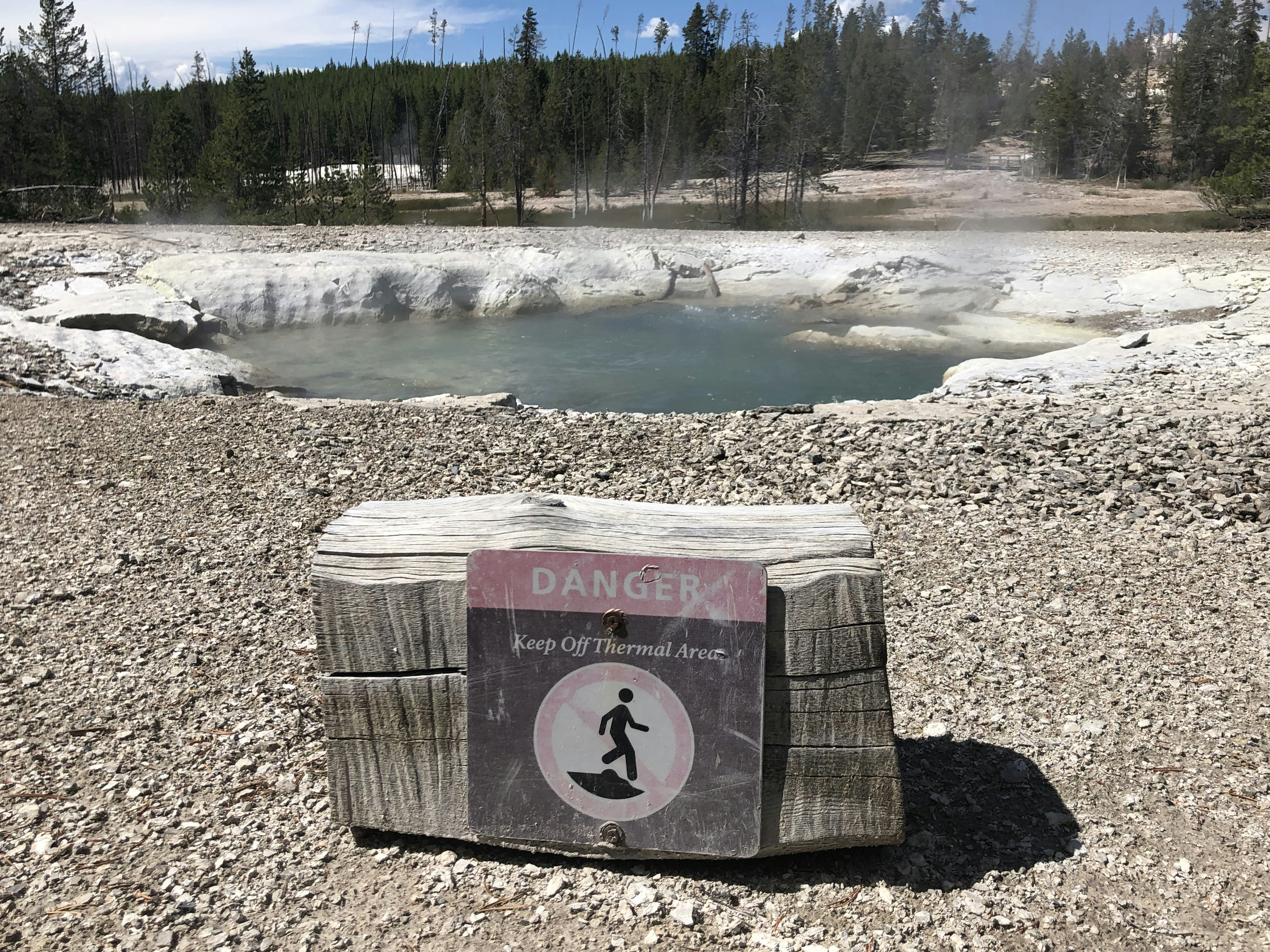
According to two federal citations, Brosnan walked around an off-limits area at Mammoth Terraces, a miniature travertine mountain fed by roughly 50 boiling springs.
The actor is now scheduled for a mandatory court appearance on January 23 where he’ll face heat for his actions. Violations of park law can result in steep fines, lengthy park bans and possible jail time.
Whilst the repercussions might seem steep, visitors should always abide by Yellowstone’s rules and think twice before dipping a toe in a hot spring or getting too close to a geyser.
Here's why – and how to enjoy the park’s hydrothermal wonders safely.
What is the source of the heat in Yellowstone?
Yellowstone sits atop a supervolcano, an underground furnace that causes 10,000 thermal features throughout the park to gurgle, spit and steam. The results can be mesmerizing, such as the colorful bands of liquid at the Grand Prismatic Spring, whose eye-popping pools look inviting.
For centuries, humans have enjoyed thermal waters. Before European colonizers arrived in North America, indigenous people used naturally-heated pools for ceremonial and medicinal reasons. In the 1st century, Romans built a spa town around the springs of present-day Bath, England. Today, people plan entire trips around geothermal spas from Germany to Japan.
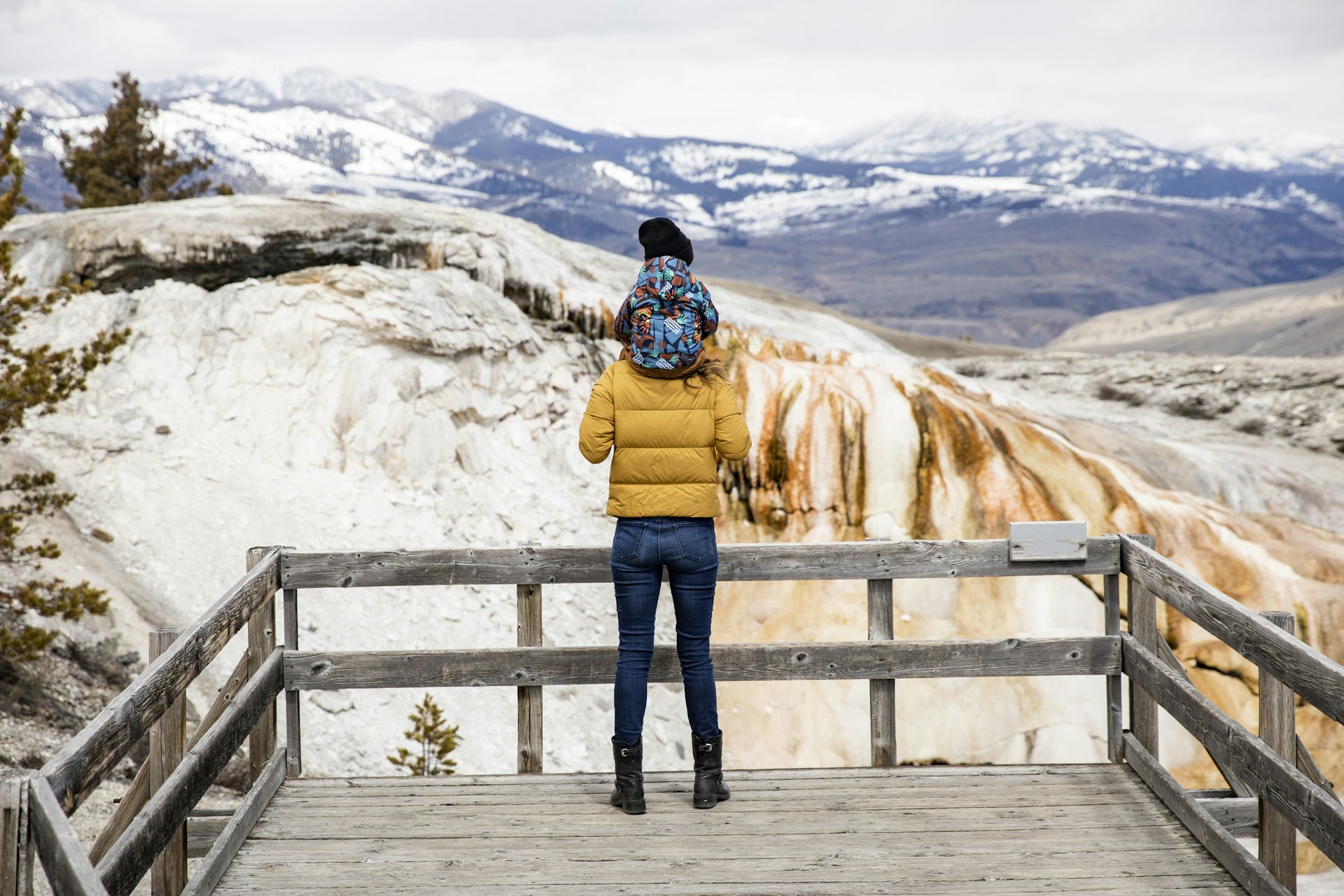
However, the waters in Yellowstone National Park aren’t safe for a soak. While it might be tempting to look inside a hissing fumarole or to snap a photo of the painterly mud pots, getting close to these unpredictable volcanic vents can be lethal.
According to the National Park Service (NPS) website, “Water in hot springs can cause severe or fatal burns, and scalding water underlies most of the thin, breakable crust around hot springs.” Paths around these heat spots change constantly, making it difficult to discern a safe off-trail route.
Even water features that don’t emit steam or seem dangerous may reach 200°F (93°C), the perfect temperature for slow-cooking ribs, not for doing the doggy paddle.
Has anyone died in Yellowstone hot springs?
Since 1872, 22 people have lost their lives due to the temperature and acidity of hot springs – more than double the number of deaths caused by bear and bison encounters, according to the US Geological Survey.
In 2016, the body of a young man “dissolved” after falling into an acidic pool while hiking through a prohibited area near Norris Geyser. On July 31, 2022, another man disappeared after entering a West Thumb Geyser Basin pool. Evidence of his death didn’t show up until August 16, when a park employee found a shoe and part of a foot floating in the water.
Yellowstone’s hot pots have injured hundreds of other people, including a woman who tried to rescue her dog from a pool in 2021. The dog later died. The park prohibits pets from entering the thermal areas.

How to enjoy Yellowstone’s geothermal features
Consider Yellowstone’s geothermal features an extension of its megafauna population: delightful to admire, if from a safe distance. There’s never a need to stray from the park’s paths – all boardwalks and trails are well-maintained and diligently mapped out, leading to picture-perfect viewpoints of the prettiest geothermal sights.
And just like with wild animals, the NPS warns visitors to avoid touching a pool or its runoff – even if it looks more inviting than the Caribbean Sea. Don’t throw objects into any of the features, either, and never chase after anything you accidentally drop into them.
If you want to take a dip while exploring Yellowstone, head to the Firehole Swim Area, a section of the Firehole River that’s heated by an upstream geothermal feature and is safe for swimming. The park’s other snow-fed lakes and rivers are too cold, making hypothermia a year-round risk.
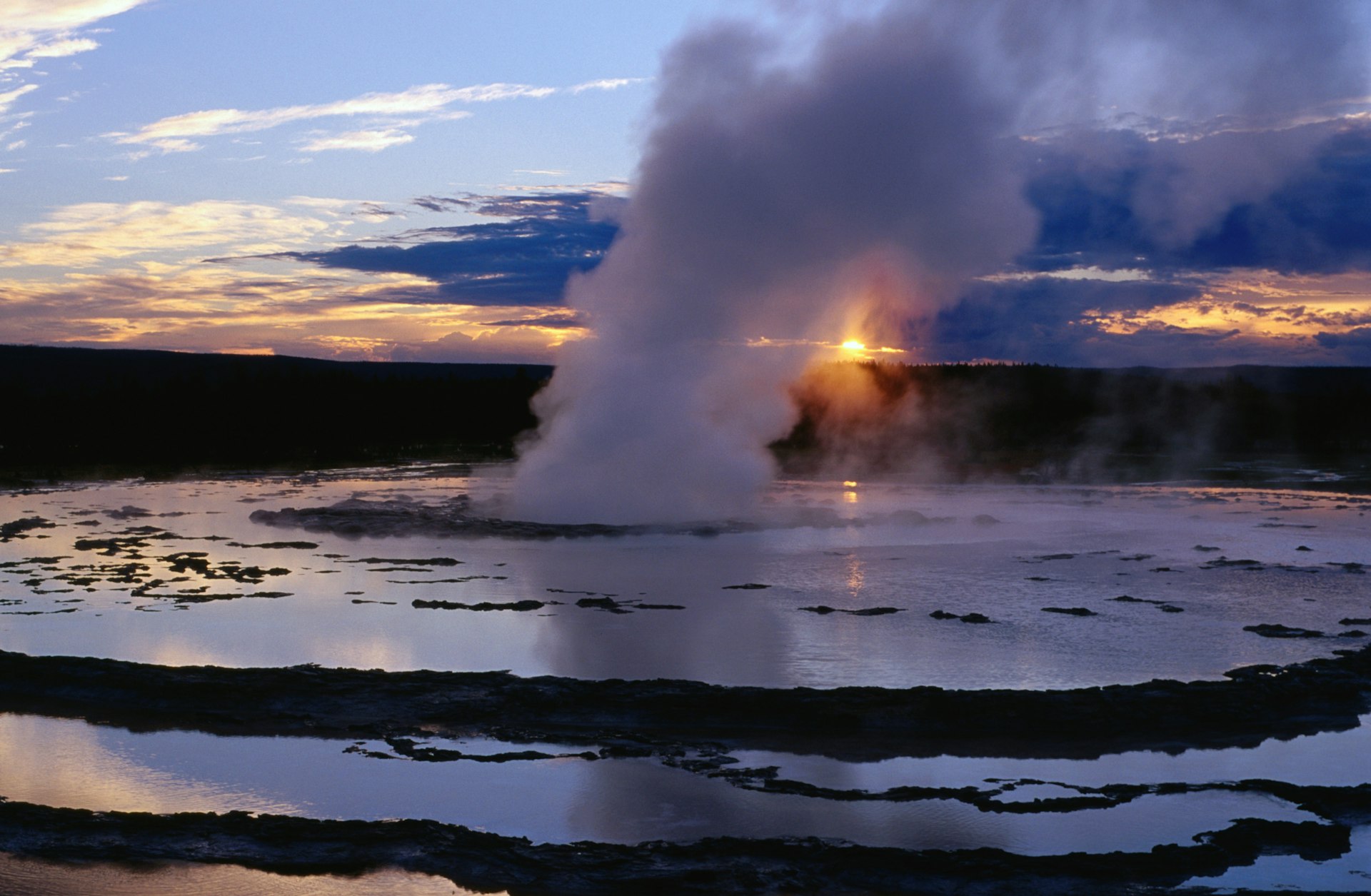
Think before jumping into a geothermal pool – no matter the location
It's not only Yellowstone with dazzling but dangerous hot springs. They're found all over the world. New Zealand’s Champagne Pool, for instance, might sound like a bubbly dream bath. But at 165°F (74°C), it will burn your skin. If that weren't bad enough, the arsenic in the water could cause some serious health issues.
This doesn’t mean all hot springs should be off-limits. Hot potting – the act of soaking in hot springs – can be a refreshing pastime, as long as you follow safety guidelines and always proceed with caution.
The heat of geothermal pools can be erratic – ranging from comfortable one day to boiling the next. Moreover, the acidity of the water can burn your eyes and skin. Then there’s the possibility of microorganisms living in springs that can cause rashes and illness.
It’s always best to consult local authorities, follow local laws, and heed warning signs before sinking into a foreign body of water.

Where to soak in hot springs worldwide
There are plenty of places worldwide where you can safely experience the rejuvenating benefits of geothermal soaking. You might splash about in Tuscany’s Cascate del Mulino, a thermal stream cascading down limestone pools at a balmy 99°F (37°C). Or you could dip in the therapeutic waters at Pamukkale, Turkey, like Egyptian Queen Cleopatra (apparently).
There are tons of US options, too with hot springs in Calistoga, California, and all around Colorado’s Rocky Mountains. If you want to stick to Wyoming, there’s Hot Spring State Park, where you can unwind at the Wyoming State Bath House.
Regarding serious geothermal swimming, Iceland makes the biggest splash. Like Yellowstone, the island nation bubbles above a volcanic hotspot, resulting in hydrothermal features everywhere from the remote Westfjords to the glacier-gouged South Coast.
But unlike Yellowstone, jumping into Iceland’s naturally-heated pools is integral to local culture. You can even plan an Iceland vacation that includes seeing Yellowstone-style hydrothermal features, like those around Lake Mývatn’s Námafjall Geothermal Area.
After exploring the area’s volcanic cauldrons, visitors can soak in the milky blue pools of the Mývatn Nature Baths. Here, the only worry is how the silica-rich water might affect your hair – a problem solved by a generous scoop of conditioner.


